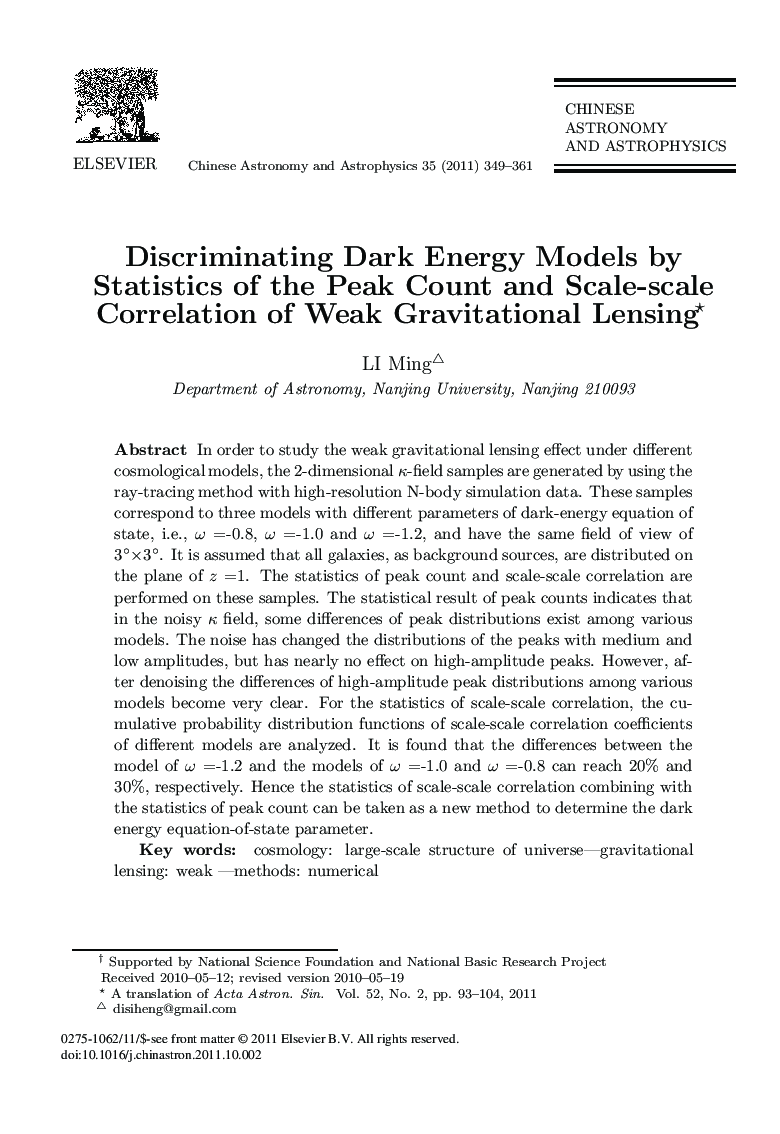| Article ID | Journal | Published Year | Pages | File Type |
|---|---|---|---|---|
| 1771802 | Chinese Astronomy and Astrophysics | 2011 | 13 Pages |
Abstract
In order to study the weak gravitational lensing effect under different cosmologicalmodels, the 2-dimensional κ-field samples are generated by using the ray-tracing method with high-resolution N-body simulation data. These samples correspond to three models with different parameters of dark-energy equation of state, i.e., Ï = â0.8, Ï = â1.0 and Ï = â1.2, and have the same field of view of 3° Ã 3°. It is assumed that all galaxies, as background sources, are distributed on the plane of z = 1. The statistics of peak count and scale-scale correlation are performed on these samples. The statistical result of peak counts indicates that in the noisy κ field, some differences of peak distributions exist among various models. The noise has changed the distributions of the peaks with medium and low amplitudes, but has nearly no effect on high-amplitude peaks. However, after denoising the differences of high-amplitude peak distributions among various models become very clear. For the statistics of scale-scale correlation, the cumulative probability distribution functions of scale-scale correlation coefficients of different models are analyzed. It is found that the differences between the model of Ï = â1.2 and the models of Ï = â1.0 and Ï = â0.8 can reach 20% and 30%, respectively. Hence the statistics of scale-scale correlation combining with the statistics of peak count can be taken as a new method to determine the dark energy equation-of-state parameter.
Related Topics
Physical Sciences and Engineering
Physics and Astronomy
Astronomy and Astrophysics
Authors
Li Ming,
